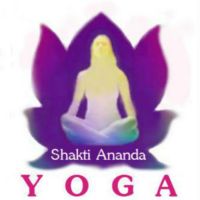Asanas can be divided into cultural, meditative, and relaxing asanas. These three types of asanas/postures have different purposes and techniques. The three types are: Meditative Poses, Relaxation Poses, and the Cultural Poses.
Meditative Poses/Asanas
The Meditative Poses are divided into Eight Parts known as the Eight Limbs of Ashtanga Yoga.
The Meditative Poses are very important when practicing the breathing exercises and meditation. One should strive to sit in any one of the four top positions for one to two hours at a stretch without moving.
– Lotus pose (Padmasan)
– Adept’s pose (Siddhasan)
– Ankle lock pose (Swastikasan)
– Easy pose (Sukasan)
– Kneeling pose (Vajrasan)
– Sitting upright in a chair (Mitrasana)
First of all, an erect position of the spine will keep it in its natural curve. Keep the head, neck, and trunk in one straight line. Secondly, training the body to sit for long periods without movements reduces its metabolic processes to a minimum. When the body is kept in a steady position for a long time, the mind becomes free from all physiologic disturbances caused by physical activities of the body.
A straight spine helps the students to concentrate because in the straight position there is a steady flow of nerve energy through the body which can be felt through the spine. This nerve energy (prana) can be increased for spiritually awakening through breathing exercises (pranayama) and concentration on the pranic flow in the spine which leads to the initiation and practice of the ancient technique known as Shakti Kriya; from the Himalayan master Mahavatar Babaji.
Relaxation Poses/Asanas
The asanas for relaxation are designed in a way that there is no need to contract any muscle. It is important to practice them exactly so your body can come to a deep relaxation and is not just lying on the floor.
There are three main relaxation postures:
Savasana or corpse pose (also used for yoga nidra)
Abdominal relaxation pose
Garbhasana or child’s pose
Cultural Poses/Asanas
The Cultural Poses are the asanas that imitate various aspects of God in the form of animals and divine states of being. Shaktiananda Yoga postures include the 12 Basic Asanas and more advanced variations of these and more.
Three Phases of Cultural Poses/Asanas:
Coming into the position
Holding the position
Getting out of the position
This group contains by far the largest amount of asanas. It is said that there are 84 lakhs (8.4 million) yoga postures. Of these, 84 are more important and 12 of them constitute the structure of the Rishikesh sequence sometimes called Sivananda series or Yoga Vidya series.
The Seven Groups of the Cultural Poses/Asanas:
Dynamic sequences – such as the sun saltuation
Inverted postures – such as the headstand or the shoulderstand
Forward bending postures – such as the sitting forward bend aka Paschimottanasana
Backward bending postures – such as the cobra , locust , or bow poses
Twisting postures – such as the half spinal twist
Sideward bending postures – such as the triangle pose
Standing postures including balancing poses – such as the tree pose
Every yoga sequence should at least contain one out of every of the groups listed above. If you take one asana of every group, you will move your spine in every direction and use all the muscles of your body. Depending on the order in which you practice them you influence the flow of the prana in your body.
> Intermediate Practice of Asanas

